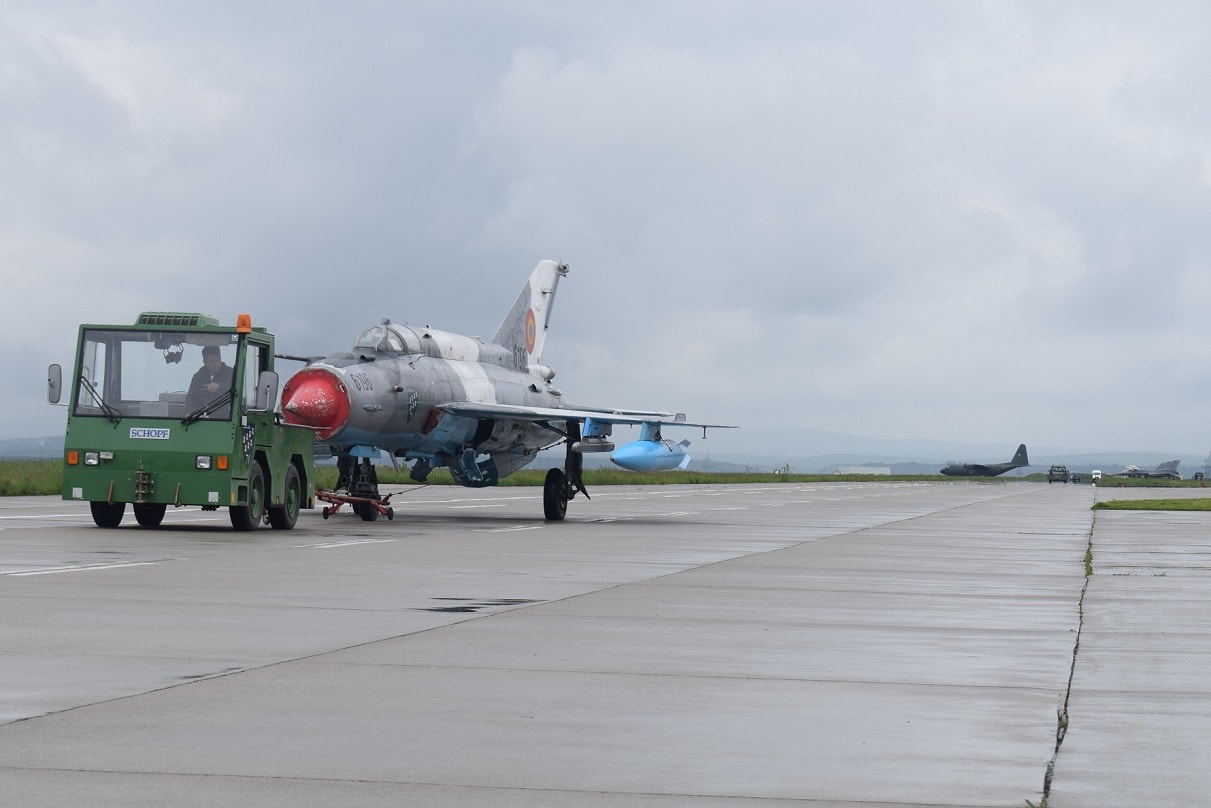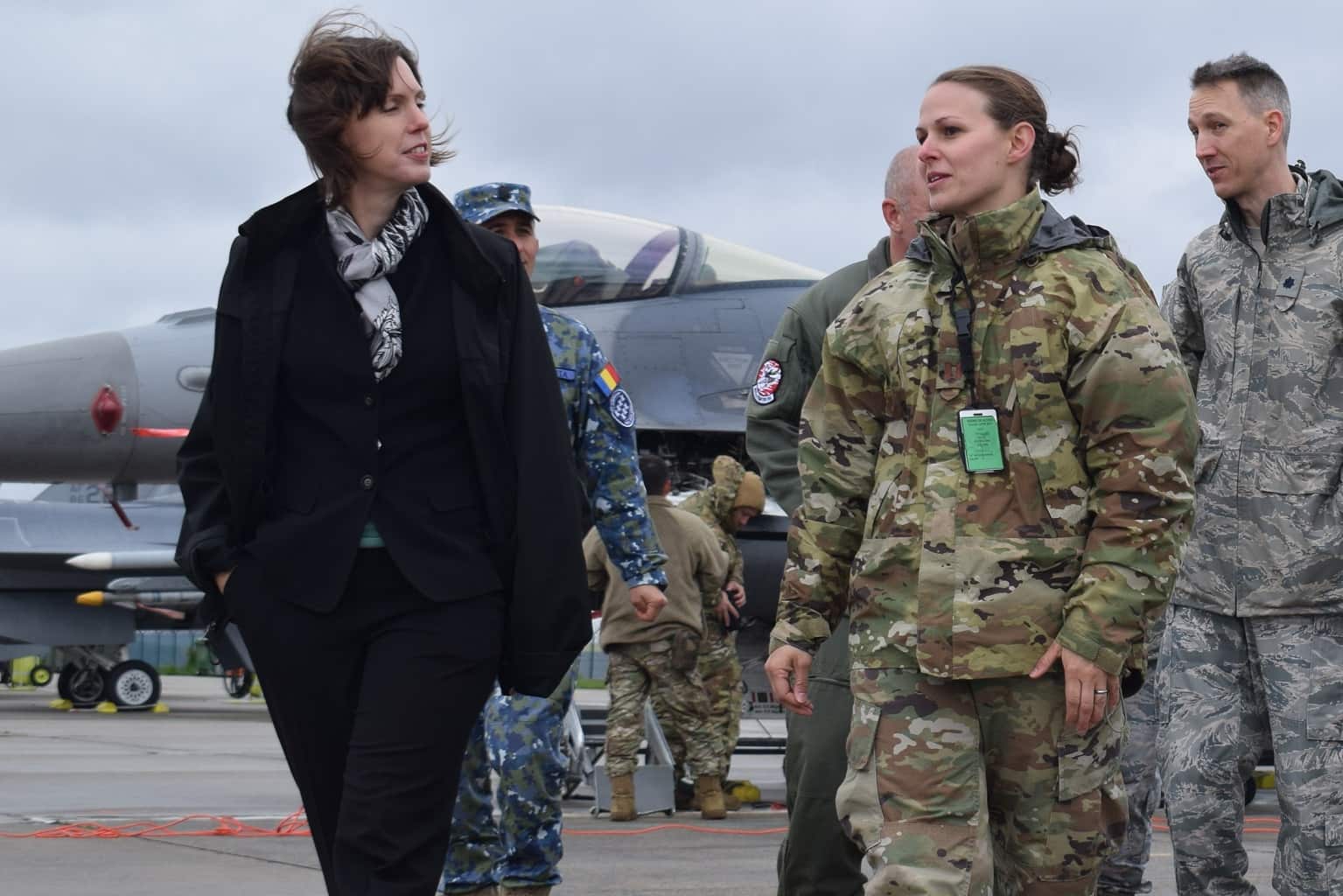U.S. F-16 Fighting Falcons to take part in joint exercises with Romanian MiG-21 fighters
Posted on
U.S. Air Forces in Europe and Air Forces has reported that F-16C Fighting Falcon aircraft and Airmen assigned to the 301st Fighter Wing, Naval Air Station Joint Base Fort Worth, Texas to take part in joint exercises with Romanian MiG-21 fighters under Operation Atlantic Resolve.
F-16C Fighting Falcons, deployed earlier this month to Câmpia Turzii, Romania, as the 457th Expeditionary Fighter Squadron, marking the start of Theater Security Package 19.1, a deterrence and partnership-building rotation under Operation Atlantic Resolve.
The U.S Airmen are expected to support the mission – also known as “Dacian Viper 19” – from Câmpia Turzii through the end of July.
“The Theater Security Package here in Romania has three primary functions,” said Lt. Col. Josh Padgett, 457th EFS commander. “One, we are here to deter any regional aggression; two, we are looking to strengthen our NATO alliances; and three, we want to build relationships with our local hosts here in Romania.”
The F-16 aircrews flew their first training sorties over Câmpia Turzii Wednesday. In the coming weeks, collaboration with Romanian Air Force counterparts — who pilot MiG-21 fighters — is expected to intensify with an ongoing battery of tactical scenario drills.

“As a matter of training, we expect to approach both air-to-air and air-to-ground missions together,” said Comandor Călin Hulea, squadron commander, 71st Air Base, Romanian Air Force. “The F-16s plan to go to Romanian training ranges to utilize the targets there for practice, but the main focus will be on tactical intercept, air combat maneuvering, and visual flight rules (VFR).”
Hulea added that Romanian Joint Terminal Attack Controllers, who coordinate with aircrews from the ground to direct airstrikes, will also benefit from these drills.
“It will be a very great opportunity for Romanian JTACs to continue cooperation with American pilots,” he said.
Padgett believes American aviators are equally excited for the opportunity to gain experience working alongside counterparts in an operational setting they are unaccustomed to. Participation in multinational exercises – such as those conducted under TSP 19.1 – aids the readiness of U.S. aircrews by enhancing professional relationships and improving overall coordination with allied and partner militaries in times of crisis.
“We’re happy to represent the United States here, we’re excited about reinforcing the NATO alliance with our Romanian partners, and we look forward to working with them over the course of the next few months,” Padgett said. “We will be flying missions and interacting with them essentially on a daily basis.”
During the three-month duration of TSP 19.1, U.S. Airmen are scheduled to participate in several additional multinational exercises with NATO partners including Astral Knight, Saber Guardian, Swift Response, and Decisive Strike.
TSP 19.1 is underwritten by approximately $8.2 million from the European Deterrence Initiative, a fund that enhances deterrence posture, increases the readiness and responsiveness of U.S. forces in Europe, supports the collective defense and security of NATO allies, and bolsters security and capacity of U.S. partners. This enables faster response to any aggression by a regional adversary against the sovereign territory of a NATO ally.
Ms. Abigail Rupp, deputy chief of mission, U.S. Embassy-Bucharest, Romania, said Tuesday during a visit with U.S. and Romanian personnel at Câmpia Turzii that the rotational presence of U.S. military forces in Europe reaffirms the strong commitment to U.S. allies and partners in the region.
“This was a great chance to visit this deployment, one in a series of partnerships we’ve had with the Romanians,” Rupp said. “The Romanian military is a strong partner for the U.S. and for NATO, and anything we can do to build up that relationship and train together is a great way to strengthen both of our countries and our defense in this region.”
This summer’s exchange between Air Force counterparts is indeed the latest chapter in a long history of U.S.-Romanian partnerships. Over the last decade, the 71st Air Base has hosted approximately ten rotations of U.S. military aircraft and personnel at Câmpia Turzii for various exercises and operations. U.S. airframes previously supported at the installation include the F-15 Eagle and the A-10 Thunderbolt II.
During this time, base commander Comandor Marius-Mihai Oatu has witnessed Câmpia Turzii’s transformation through numerous improvements to airfield infrastructure.
“If you came 15 years ago, it was a completely different air base in terms of infrastructure,” he said. “But together with our American partners, we managed to set up the infrastructure which allows us to accomplish all our missions.”
Acknowledging the practical value of their bilateral engagements, Oatu believes his prior work with U.S counterparts has informed his appreciation for the intangible benefits of defense cooperation as well. For this reason, Oatu says he is is hopeful this summer’s work with U.S. Airman during TSP 19.1 will be their most fruitful collaboration of all.
“I’ve come to understand that beyond practicing tactics, techniques, procedures, the most important thing is the bond between Romanian and American Airmen,” he said. “One element that led me to this result is that whenever the Stars and Stripes flies near the Romanian colors, the only result is success.”

Subscribe to our newsletter
Promotions, new products and sales. Directly to your inbox.
